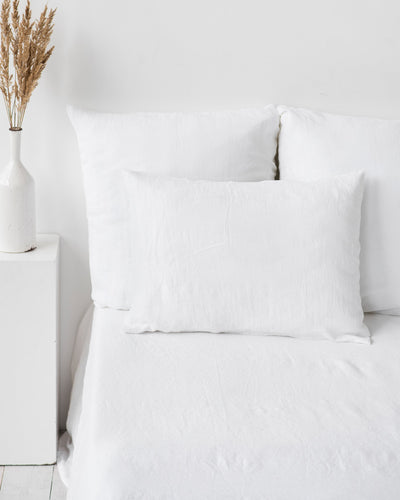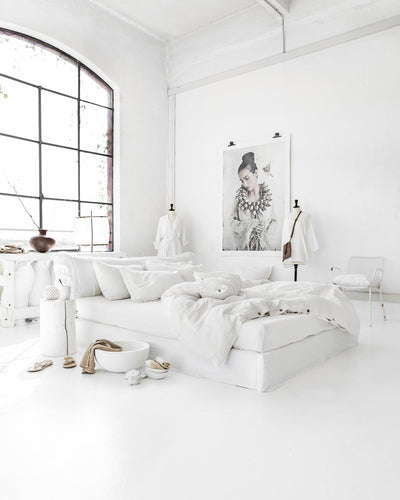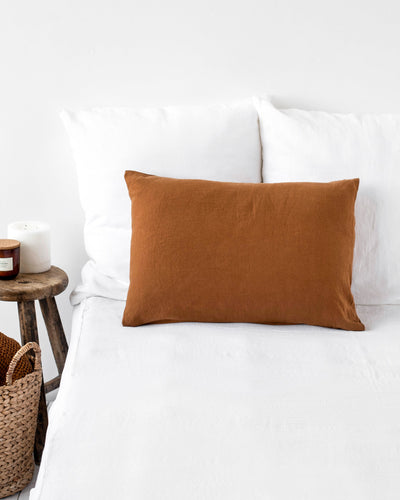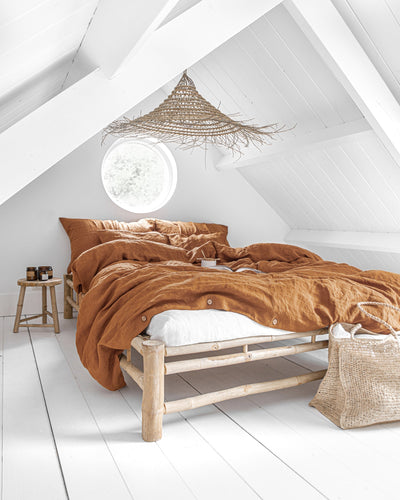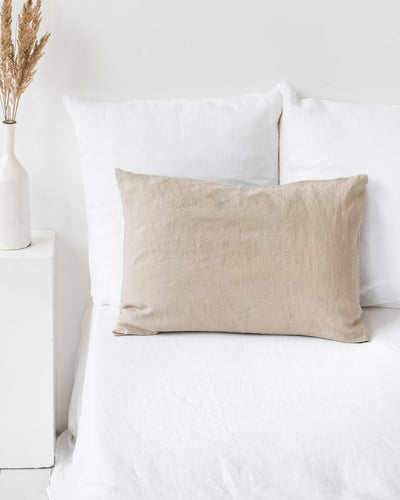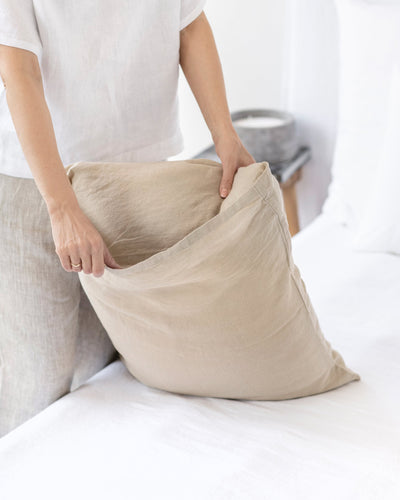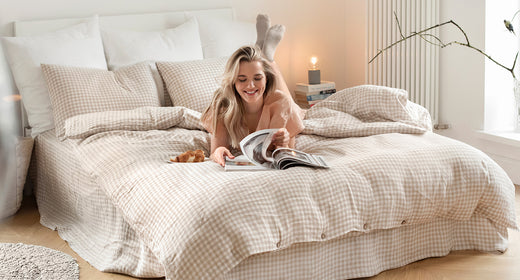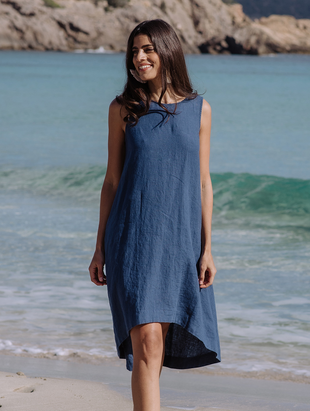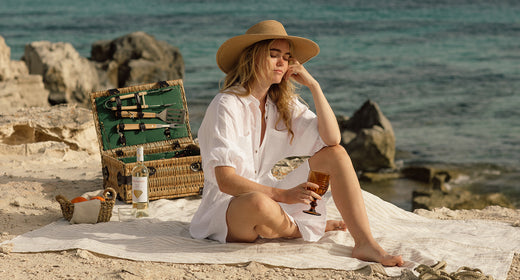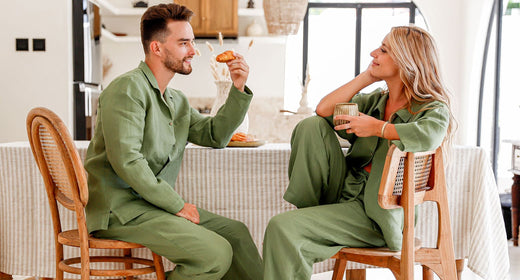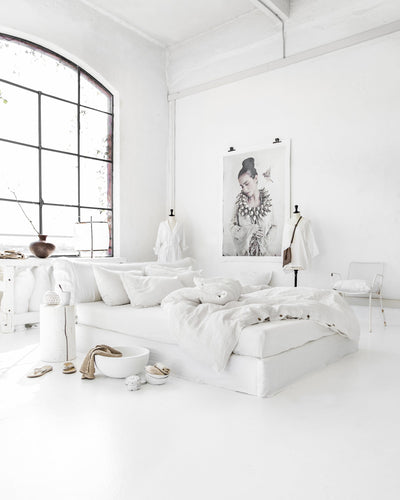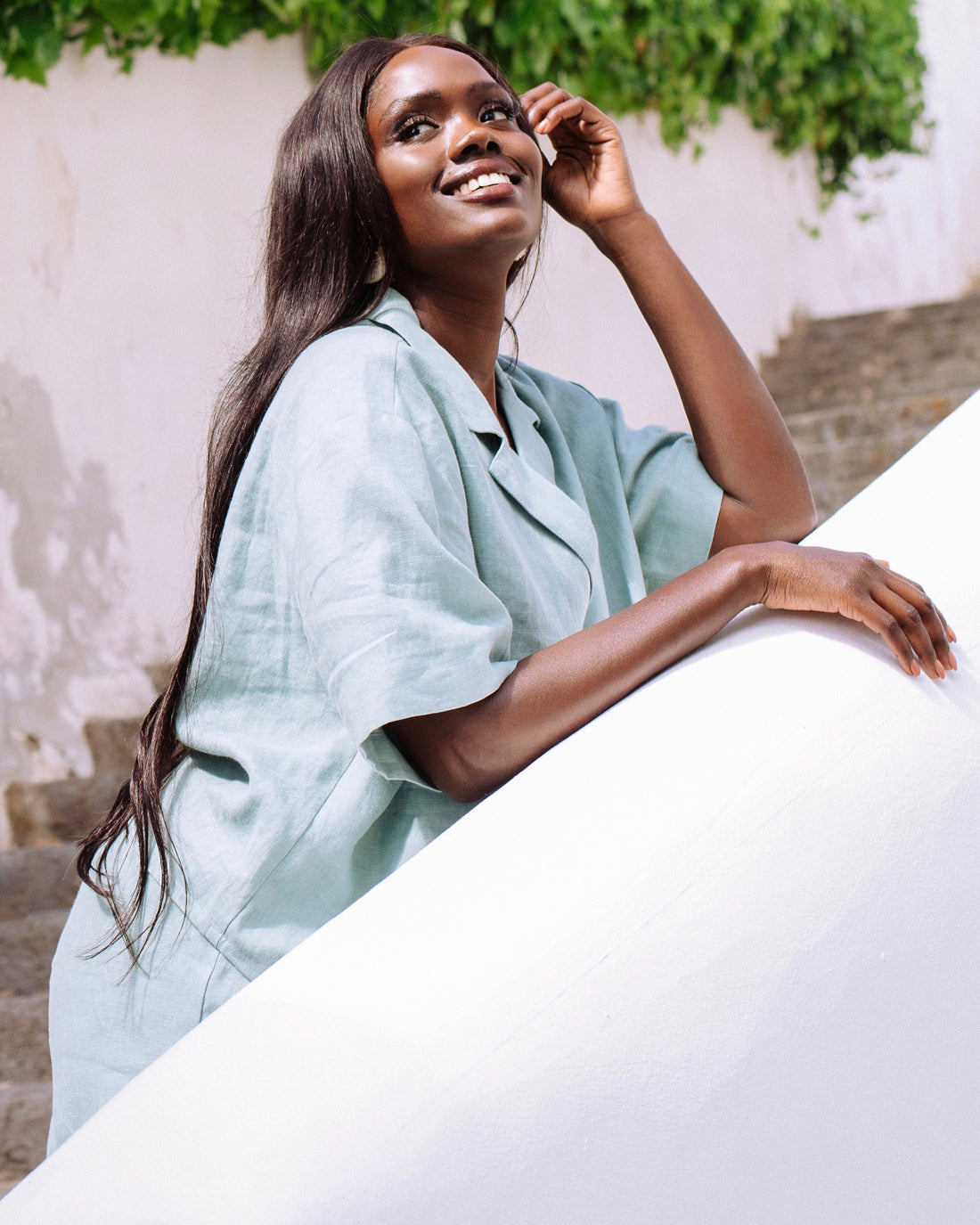
Is Linen Expensive?
The Art of Linen Production
Flax is among the first textiles produced by humans, with scraps of linen found in cave dwellings in the Caucasus estimated to be 30,000 years old. Flax plants can be harvested in around 100 days, making them suitable for growth between the growing seasons of other crops. They prefer cooler climates all around the world, from Western Europe to India and Pakistan.
The journey from flax seed to woven linen fabric is a labor-intensive and complicated process, thus adding to the premium pricing. The first step is sowing the seeds in March and harvesting them in July. During the harvest season, flax is pulled up with the root system to maximize the length of the fibers. Next, flax goes through the retting process, during which flax is soaked in water until the pectin holding the fibers together breaks down. The flax goes through the scutching process, separating the woody stem from the flax fibers. The linen production process ends with spinning the flax fibers into linen and weaving linen yarns into the fabric, which can later be bleached or dyed.
Quality Matters: Linen vs. Low-Quality Alternatives


Among the several advantages of linen over low-quality alternatives, such as synthetic or low-grade cotton, are:
- Breathability: Linen is known for its exceptional breathability and moisture absorption properties. As it is a natural insulator, it keeps you comfortable in the summer and retains heat in your body when it's cold. Furthermore, it can absorb up to 20% of its weight before feeling damp.
- Comfort: Natural fibers, like linen, are more comfortable wearing as they get softer with each wear, are hypoallergenic, and possess antibacterial properties.
- Timeless style: Linen has been around for a long time and still holds relevance due to its classic and timeless appearance that can be dressed up or down, making it suitable for several occasions.
Durability and longevity of linen
One factor that makes linen unique and expensive is its durability and longevity. When properly taken care of, linen is one of the most durable fabrics on the textile market. What makes this fabric so durable is the unique nature of linen production, which makes the fibers able to withstand high temperatures, frequent washing, and sunlight. Therefore, you can expect your linen to last for years to come.
Environmental Considerations
With each passing day, the need for more eco-friendly and sustainable practices becomes weighty. Therefore, consumers are willing to support eco-conscious practices as they find value in environmentally friendly linen options, even if they come at a slightly higher cost. Some environmental considerations associated with linen pricing are sustainable farming practices, OEKO-TEX or other certifications, dyeing techniques, transportation and supply chain, eco-labeling, biodegradable packaging, and many more.
Sustainability of linen production
Each and every step of linen production, from seed to fabric, check most sustainability boxes. Flax is a versatile plant; each part has been traditionally used, so nothing is wasted. By way of illustration, flaxseed oil is rich in omega-3 and has many health benefits, while linseed oil can be used as a varnish for wood preservation. Furthermore, what makes linen so sustainable is that it takes approximately four times less water to make a linen shirt than a cotton shirt, with 80% of linen energy and water consumption stemming from washing and ironing the garment.
Comparison with synthetic fabrics and its ecological footprint
Linen and synthetic fabrics like polyester and nylon have a clear distinction in terms of ecological footprint, such as:
- Material source: Linen is made from renewable and biodegradable flax fibers, whereas synthetic fabrics derive from petroleum, a nonrenewable source.
- Energy consumption: The linen production process is known for its energy efficiency, as only 20% of the energy consumption comes from growing and making the fabric. Synthetic fabrics, on the other hand, have an energy-intensive process from the extraction of petroleum to the manufacturing process.
- Recycling: Natural fibers can be recycled or repurposed into various products, whereas the recycling process of synthetic fabrics is more challenging and has its limitations.
The Role of Supply and Demand
Supply and demand dynamics are fundamental drivers of linen pricing. Factors like crop production and consumer trends influence the balance between supply and demand, ultimately determining the price consumers pay for linen products.
Growing demand for linen
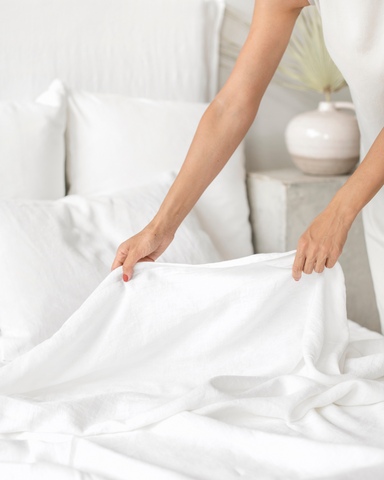

During 2018-2022, the flax fiber and tow production grew at a CAGR (Compound Annual Growth Rate) of 3%, thus supporting the linen fabric market growth. As the fashion industry continues to grow, so does the popularity of linen as a versatile fabric for clothing and houseware items, like bedding, tablecloths, napkins, etc. Moreover, the growing demand for linen is driven by consumer demand for style, quality, and comfort. As consumers become more conscious about their ecological footprint and ethical practices, linen becomes a sought-after sustainable alternative. Fashion trends also play a significant role in the rise in demand, as contemporary trends lean towards a relaxed, natural, and timeless style. As consumers prioritize natural and eco-friendly materials in various industries, the demand for linen will likely remain strong, driving innovation and expansion in the linen market.
How branding and marketing affect linen pricing
Branding and marketing strategies can significantly influence the pricing of linen products through:
- Brand reputation: Established and reputable brands can charge more as consumers trust their quality and are willing to pay for that assurance.
- Marketing strategies: Marketing campaigns highlighting the artistry of creating linen products, ethical sourcing of flax, or the sustainable practices behind linen production can appeal to consumers who want products made from socially responsible practices.
- Limited editions and collections: Brands may release limited-edition or designer collections, as unique and exclusive products are often priced higher.
- Storytelling: Everyone loves a good story. Therefore, marketing campaigns or compelling product descriptions allow the brand to emotionally connect with its consumers, who are more willing to pay for captivating products.
Perceived value
The perception of linen isn't a contemporary concept, as it has been used throughout history for creating exquisite and high-quality garments, thus gaining the association with grace, refinement, and luxury. However, nowadays, the perceived value is related to effective branding, which showcases higher quality, luxury, and sustainability when purchasing linen products. Another factor contributing to the perceived value of linen is craftsmanship, as attention to detail, precision in stitching, and overall artistry can create a sense of quality and value.
Tips for Affordably Enjoying Linen


Enjoying linen can be both luxurious and affordable with the right approach. Here are some tips on using more linen products without breaking the bank.
Finding reasonably priced linen products
You can find reasonably priced linen products by looking for sales and discounts from linen brands and retailers. Another way to buy linen products at a reduced price is to buy them during the off-season or clearance sales. You can shop for linen clothing in the winter or bedding in the summer.
Caring for linen to maximize its lifespan
Although linen has a high lifespan, you can make it last even longer by properly caring for it. Make sure to follow care instructions to prevent unnecessary damage and avoid excessive washing or drying.
DIY options and thrift shopping
If you're creative and crafty, you can create your own linen products like napkins, cushion covers, or tablecloths, as sewing your item can be cost-effective. Another cost-effective option is thrift shopping for second-hand linen clothing, bedding, or home decor; as linen tends to get better with age, you'll be able to find items still in excellent condition.
Conclusion
The appeal of linen's unique qualities, labor-intensive production requirements, and growing demand for sustainability collectively contribute to its premium price. Moreover, linen's timeless elegance and eco-friendly appeal continue to captivate consumers interested in investing in both quality and the planet. Despite its higher cost, linen is a worthwhile investment, and its reputation for luxury is well deserved. It is hypoallergenic and highly thermoregulatory, thus keeping the skin comfortable all year long. Furthermore, it is highly durable and gets better with each wear. Among the advantages of linen is the variety of colors and prints available in this fabric. So, the next time you adorn your living space with linen's understated beauty, you'll understand why this age-old textile remains a symbol of refined taste and conscientious living.
 United States
United States
